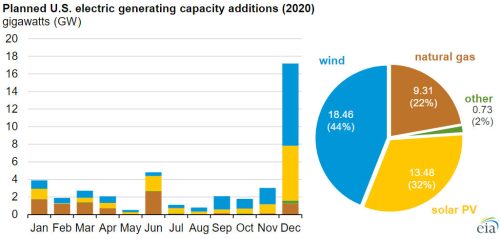BlueSel Commercial Solar Blog

Click here to see the full graphic
How Solar Energy is Winning Over Fossil Fuels
Adapting Technology
Two things help accelerate the adoption of technology – its value and use for the consumer and the growing ability over time for people to acquire it. Perhaps a prime example is the smartphone. In a reasonably short period of time, devices have become much more powerful and much more affordable for billions across the globe.
Solar power is the new smartphone in a way. While the fundamental technology is decades old, solar has quickly become the most versatile clean energy source and a better solution in cost and environmental impact compared to traditional generation.
Whether coal or natural gas, traditional fuel burning plants continue to be expensive to build, operate, and maintain for long periods of time. They only work economically as they grow in size. In contrast, solar energy systems can provide inexpensive power to each home individually as well as at the utility scale for thousands of homes.
The versatility and competitive cost of solar power is regularly proven in reports looking back at real world data. Here are our highlights that we think tells the essential story.
Renewable Energy Competes with Fossil Fuels
For the past few years, renewable energy capacity growth has begun to outpace all traditional forms of fossil fuel energy production. The economics for clean energy, and especially solar energy have become good enough to make large and utility scale projects preferred in many cases.
Over the lifetime of power generation, clean energy outpaces coal generation and is now calculated to be equal to natural gas generation. It cheaper than gas in a growing number of instances. Financial and asset management powerhouse Lazard regularly reports on the Levelized Cost of Energy (LCOE) in the U.S. {link to Lazard} LCOE measures the total cost of building and operating a facility over its lifetime. Looking at accumulated data near the end of 2019, they report renewable energy at utility scale is beating fossil fuels in LCOE. Lazard adds that even without subsidies the cost gap will widen for decades to come.
That is why the U.S. forecast for 2020 is bright. The Energy Information Administration (EIA), a part of the U.S. Department of Energy, annually makes conservative predictions for the following year expansion based primarily on known commitments. EIA reports that combined, wind and solar energy will make up nearly 75% of all capacity additions to the grid this year. Solar capacity expansion rate in 2020 will greatly outpace that of 2019, going from around 8% year-over-year to 13.5%
What Makes Solar Power Competitive
Speed.
Solar power projects can be brought online to provide electricity faster than other means, quickly generating income and offsetting investment costs. While at scale wind energy requires more time to begin producing power, like solar power, the overall economics win out over fossil fuels.
Increasing Efficiency.
Hardly 5 years ago, the majority of affordable but quality solar panels were rated at 250W perhaps up to 280W each. State of the art products at a premium price were perhaps approaching 325W per panel.
Today, the most economical panels are 330W to perhaps 360W, and the newest products are exceeding 400W per panel. Why is this a big deal? Because now every homeowner can produce more electricity in the same amount of roof space, or less.
Versatility.
Utilities invest in solar power either by owning large solar electric projects outright or by signing long term power purchase agreements. However, unlike every other energy source, solar works at nearly every scale. Businesses and homeowners are adding gigawatts of solar power and saving over time compared to buying 100% from the utility. Solar energy isn’t confined to homes and businesses either. Just look around. Boats and RVs use solar technology. You have garden and security lights on solar power, and cookers, fountains, PDAs and a big range of devices that may operate on solar energy. {link to Exact post Summertime is Solar Time} With such broad uses across every scale, it is destined to be ubiquitous with increasingly lower costs as more is manufactured and installed.
2020 A Big Year for Solar in Massachusetts
While the cost of solar power components continue to drop, incentives are being relaxed in response. The federal Investment Tax Credit (ITC) has officially decreased to 26% at the start of the year. And the Massachusetts SMART incentive progresses through is blocks, each decreasing the incentives paid.
If you are a business owner, we encourage you to request a free and no obligation evaluation to get an initial perspective of your costs and savings. As the EIA predicts, this will be another growth year for solar. Manufacturers make commit their solar panel capacity early. So, to enjoy the best ITC and SMART incentives, take a look as early as you can.


